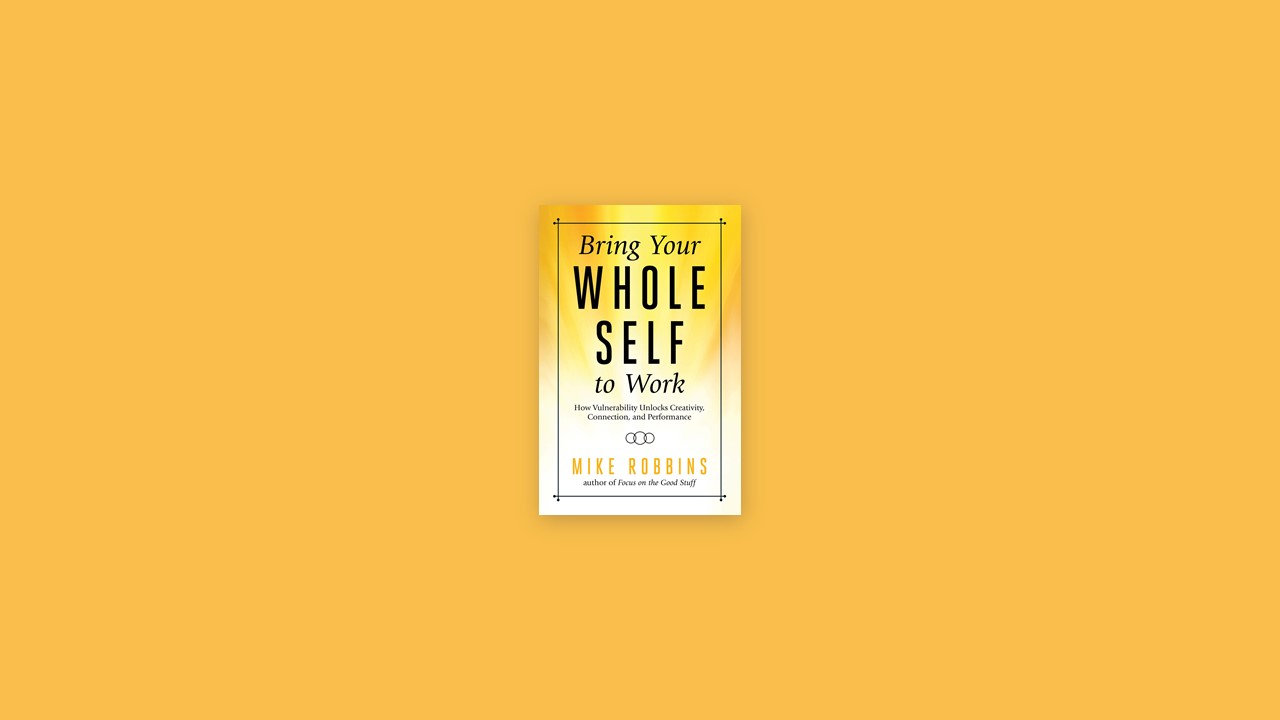PRINCIPLE #1: Be Authentic
Honesty – Self-Righteousness + Vulnerability = Authenticity
One of the things that makes authenticity challenging, and why we cling to our self-righteousness and avoid vulnerability, is that we worry about damaging our credibility. We erroneously think that somehow being right and covering up any perceived weakness, flaw, or insecurity will give us credibility with others, especially at work. But this is a superficial understanding of credibility. There are really two types of credibility:
Professional Credibility. This is about our résumé, our track record, our title, where we went to school, the results we’ve produced in the past, our skills, and other tangible things. Professional credibility is important: most of us have our jobs or careers owing in part to our professional credibility. Professional credibility is important. In many cases, however—especially for the purpose of building trusting relationships, strong teams, and a positive culture—personal credibility is much more important.
Personal Credibility. This has to do with people being able to relate to us, trust us, understand us, and find common ground with us—and with our ability to do these things with them in return. We build personal credibility with others by listening to them, opening up with them, sharing about ourselves, caring about them, apologizing when necessary, and being willing to lower the waterline on our iceberg. Self-righteousness damages our personal credibility, and vulnerability enhances it. The best way for us to build personal credibility with others is to be authentic. When we have personal credibility with others, there is more connection, loyalty, and understanding. We can give and receive feedback, work through challenges, and navigate the ups and downs of business and life together. We see each other as real people, not just as titles or résumés.
Understanding and separating out these two types of credibility can allow us to let go of our attachment to being right, and encourage our willingness to be more vulnerable—both of which are required for us to be authentic.
Authenticity is the foundation of bringing our whole selves to work. When we have the courage to be authentic (honest, without self-righteousness, and with vulnerability), not only does it liberate us, but it also gives us the ability to inspire and empower others. Authenticity is also a key factor both in creating a safe, healthy, and strong culture around us, and in ensuring that people and teams are engaged and performing at the highest level.
PRINCIPLE #2: Utilize the Power of Appreciation
Recognition is positive feedback based on results or performance. When we produce a particular result, we hope to get recognized for it. Sometimes recognition is given in a formal way—an award, a bonus, a promotion, a raise, an official announcement, a gift, public acknowledgment, a trip like the one given to the award winners at Charles Schwab, etc. Sometimes recognition is given more informally—a thank-you, a literal or figurative pat on the back, a note, or something simple letting us know we’ve done a good job. These things can be important, especially if they’re done in a timely, generous, and genuine way
Appreciation, on the other hand, is about acknowledging a person’s inherent value. It’s not about recognizing their accomplishments; it’s about appreciating who they are as a human being. In simple terms, recognition is about what we do; appreciation is about who we are. This is important for many reasons, but mainly because even when we have success, individually and collectively, there may be failures and challenges along the way. And even if there aren’t, there may not be tangible results to recognize. If we focus solely on positive outcomes, we miss out on lots of opportunities for connection, support, and appreciation. What most of us truly yearn for at work and in life is to be appreciated for who we are, not just what we do.
PRINCIPLE #3: Focus on Emotional Intelligence
Today, most of us understand the importance of emotional intelligence in business, and the research on and awareness of this topic has grown exponentially in the past two decades. Many companies have formal programs that train employees, managers, and executives in EQ skills. And during the recruiting process for many jobs, companies try to assess not only the interviewee’s IQ, experience, qualifications, and skills but also his or her emotional intelligence.
Being emotionally intelligent takes awareness, commitment, and skill. As Dr. David Caruso of the Yale Center for Emotional Intelligence says, “It is important to understand that emotional intelligence is not the opposite of intelligence, it is not the triumph of heart over head—it is the unique intersection of both.” Dr. Caruso points to the fact that for us to be successful at work, we have to integrate our IQ and our EQ.
Mindfulness is one of the most powerful ways for us to deepen our self-awareness and to expand our capacity for self-management. And the more mindful we are, the more empathy we tend to have for others and the better we become at managing the relationships we have. So mindfulness is, of course, a key practice in the evolution and deepening of our emotional intelligence.
PRINCIPLE #4: Embrace a Growth Mindset
With a fixed mindset, we believe our basic qualities, like our talent or intelligence, are simply fixed traits. We spend our time documenting our intelligence or talent, instead of developing them. We also believe that talent alone creates success—without effort. With a growth mindset, on the other hand, we believe that our most basic abilities can be developed through dedication and hard work—brains and talent are just a starting point. This view creates a love of learning and a resilience that is essential for great accomplishment.
Our mindset has a big impact on how we learn and work as individuals and on how we collaborate with others. And according to the research, our mindset exists on a continuum, from “fixed,” to “mixed,” to “growth.” We’re not static human beings and none of us have a mindset that is all fixed or all growth, although we may have a tendency to be more on one side of the continuum than the other.
The good news is that we can always move in the direction of growth if we choose. It also turns out that in some situations and some relationships we might have more of a growth mindset, and in others more of a fixed mindset. It’s important for us to be aware of our fixed mindset “triggers”—the things that can pull us from the growth-mindset side of the continuum back toward the fixed-mindset side. These triggers can be things such as receiving criticism, facing challenges, faring poorly compared to others, dealing with change or uncertainty, and failing. These are things that can push us into places of insecurity or defensiveness, which can inhibit our growth and learning.
PRINCIPLE #5: Create a Championship Team
The paradox of teamwork is that for us to fully show up, engage, be successful, and create meaning and fulfillment in our work, collaborating with others is essential; while at the same time, there are forces within us (like our egos, personal ambitions, and fears) and within our teams and organizations (like competition, territorialism, and scarcity), that can spur us to focus primarily on ourselves. It’s important for us to acknowledge this paradox with awareness, ownership, and compassion, and to work through it as best as we can. Teamwork can be challenging, and often involves lots of growth opportunities for us and our colleagues. So the best way to approach it is with a growth mindset, as we discussed
When most of us think about our “job,” we think of what we do—engineering, sales, project management, marketing, human resources, operations, design, finance, and so forth. While these descriptions may encapsulate what we do and the title we hold, they’re not actually our job. If we’re part of a team, we each have a specific role, which is what we do, but our job is to help fulfill the goals, mission, and purpose of the company, whatever they may be. In other words, we’re there to do whatever we can to help the team win. The challenge with this is that most of us take pride in our role and we want to do it really well, which is great.
However, when we put our role (what we do specifically) over our job (helping the team win), things can get murky—our personal goals become more important to us than the goals of the organization. It takes commitment and courage, but organizations made up of people who understand this simple but important distinction—who realize that everyone on the team has essentially the same job but different roles—have the ability to perform at the highest level and with the most collaborative environment.


